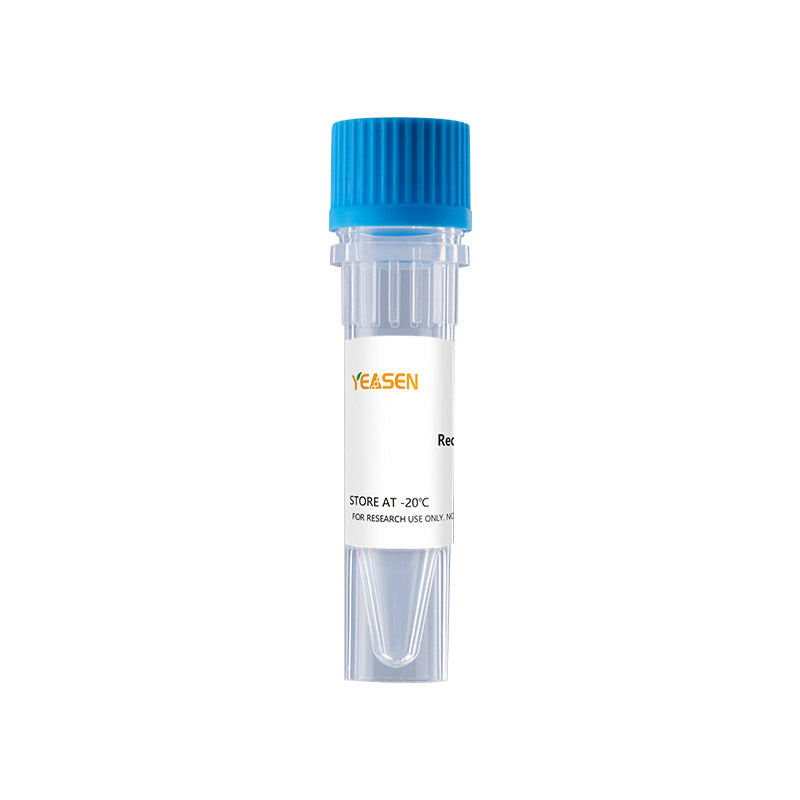Description
IL-28B (also named interferon-lambda 3, IFN-lambda 3), IL-28A (IFN-lambda 2) and IL-29 (IFN-lambda 1) are type III interferons that are class II cytokine receptor ligands. They are distantly related to members of the IL-10 family and type I IFN family. Human IL-28B cDNA encodes a 200 amino acid (aa) protein with a 25 aa signal peptide and a 175 aa mature protein that lacks N-glycosylation sites. Mature human IL-28B shares 64% and 75% aa sequence identity with mouse and canine IL-28B, respectively, and is active across species. Human IL-28B shares 94% and 69% aa identity with human IL-28A and IL29, respectively. Type III interferons are widely expressed, but are mainly produced by antigen presenting cells in response to viruses and double-stranded RNA that interact with Toll-like receptors or RIG-1 family helicases. They signal through a widely expressed receptor that is a heterodimer of the IL-10 receptor beta (IL-10 R beta ) and IL-28 receptor alpha (IL-28 R alpha ; also called IFN-lambda R1). Interaction of either type I or type III IFNs with their receptors activates similar pathways, including JAK tyrosine kinase activation, STAT phosphorylation and formation of the IFN-stimulated regulatory factor 3 (ISGF-3) transcription factor complex. Both type I and III IFNs induce antiviral activity and upregulate MHC class I antigen expression. Cell lines responsive to type III IFNs are also responsive to type I IFNs, but in general, higher concentrations of type III IFNs are needed for similar in vitro responses. In vivo, however, type III IFNs enhance levels of IFN-gamma in serum, suggesting that the robust anti-viral activity of type III IFNs may stem in part from activation of the immune system. Anti-proliferative and antitumor activity in vivo has also been shown for type III IFNs.
Product Properties
|
Synonyms |
Interleukin 28B;Interferon lambda-3;IFN-lambda-3;Interleukin-28B |
|
Accession |
|
|
GeneID |
|
|
Source |
E.coli-derived mouse Interferon-lambda3/Interleukin-28B protein, Asp20-Val193 |
|
Molecular Weight |
Approximately 19.6 kDa. |
|
AA Sequence |
DPVPRATRLP VEAKDCHIAQ FKSLSPKELQ AFKKAKGAIE KRLLEKDMRC SSHLISRAWD LKQLQVQERP KALQAEVALT LKVWENINDS ALTTILGQPL HTLSHIHSQL QTCTQLQATA EPKPPSRRLS RWLHRLQEAQ SKETPGCLED SVTSNLFQLL LRDLKCVASG DQCV |
|
Tag |
None |
|
Physical Appearance |
Sterile Filtered White lyophilized (freeze-dried) powder. |
|
Purity |
> 98 % by SDS-PAGE and HPLC analyses. |
|
Biological Activity |
Fully biologically active when compared to standard. The ED50 as determined by an anti-viral assay using human HepG2 cells infected with encephalomyocarditis is less than 30 ng/ml, corresponding to a specific activity of > 3.3 × 104 IU/mg. |
|
Endotoxin |
< 1.0 EU per 1μg of the protein by the LAL method. |
|
Formulation |
Lyophilized from a 0.2 µm filtered concentrated solution in PBS, pH 7.4. |
|
Reconstitution |
We recommend that this vial be briefly centrifuged prior to opening to bring the contents to the bottom. Reconstitute in sterile distilled water or aqueous buffer containing 0.1 % BSA to a concentration of 0.1-1.0 mg/mL. Stock solutions should be apportioned into working aliquots and stored at ≤ -20 °C. Further dilutions should be made in appropriate buffered solutions. |
Shipping and Storage
The products are shipped with ice pack and can be stored at -20℃ to -80℃ for 1 year.
Recommend to aliquot the protein into smaller quantities when first used and avoid repeated freeze-thaw cycles.
Cautions
1. Avoid repeated freeze-thaw cycles.
2. For your safety and health, please wear lab coats and disposable gloves for operation.
3. For research use only!
Payment & Security
Your payment information is processed securely. We do not store credit card details nor have access to your credit card information.
Inquiry
You may also like
FAQ
The product is for research purposes only and is not intended for therapeutic or diagnostic use in humans or animals. Products and content are protected by patents, trademarks, and copyrights owned by Yeasen Biotechnology. Trademark symbols indicate the country of origin, not necessarily registration in all regions.
Certain applications may require additional third-party intellectual property rights.
Yeasen is dedicated to ethical science, believing our research should address critical questions while ensuring safety and ethical standards.

